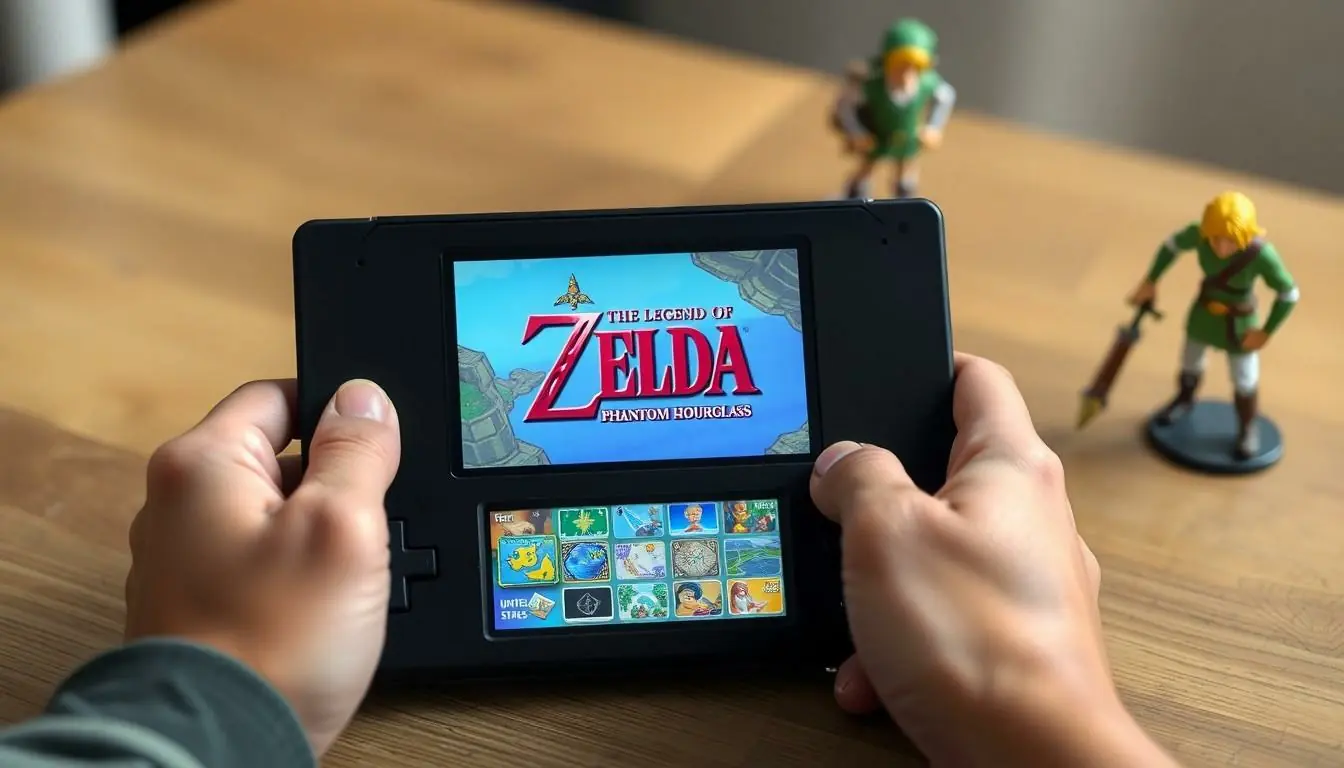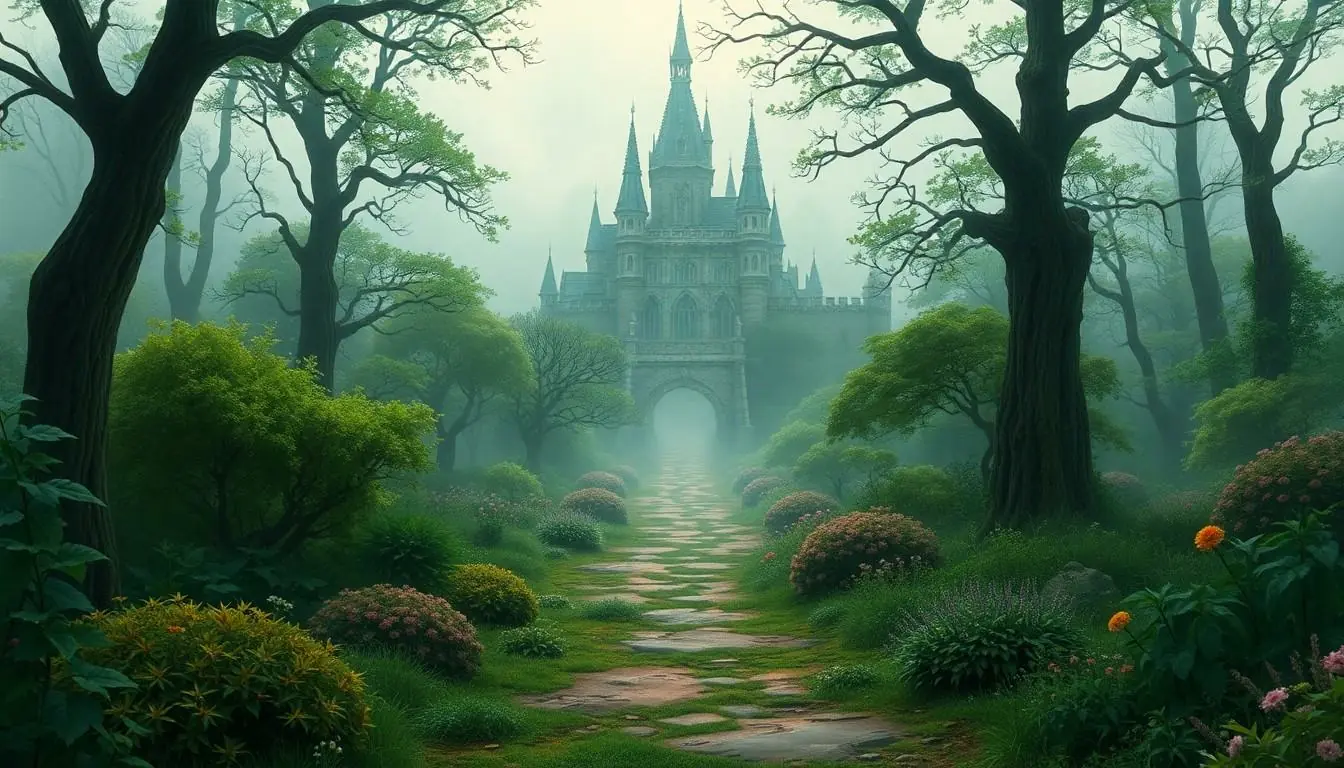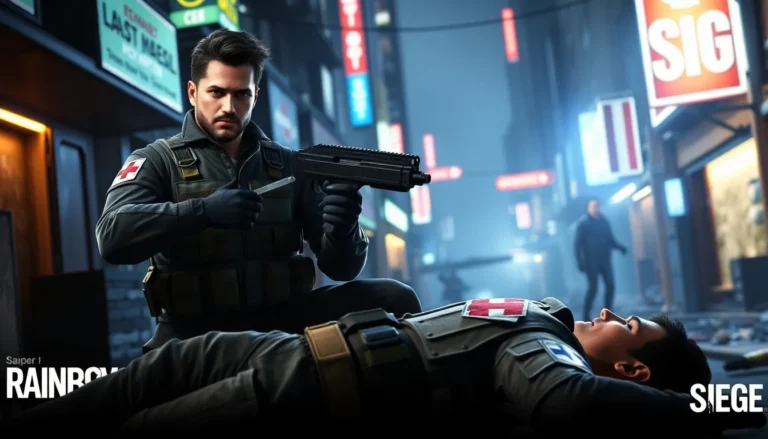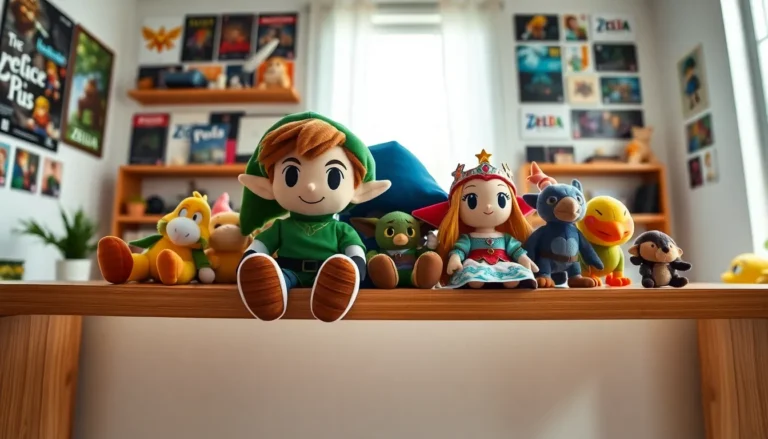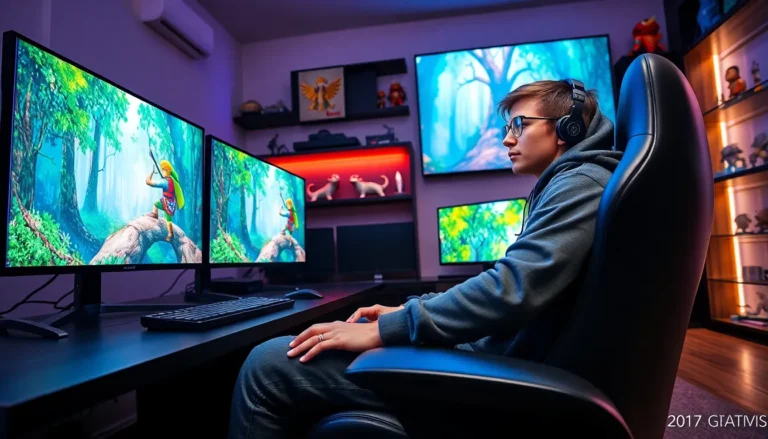Table of Contents
ToggleIn the vast realm of Hyrule, where heroes rise and epic quests unfold, even the most beloved franchises stumble occasionally. The Legend of Zelda series, adored by millions, has its fair share of missteps. But which game takes the crown as the worst of them all? Get ready to dive into a delightful debate that’s sure to spark some passionate discussions among fans.
Overview Of The Worst Zelda Game
Many fans debate which title in the Legend of Zelda series deserves the label of the worst game. The consensus often points to The Legend of Zelda: Phantom Hourglass. Released for the Nintendo DS in 2007, it faced criticism for its repetitive gameplay mechanics. Players found the touch-screen controls cumbersome, detracting from the overall experience.
Graphically, Phantom Hourglass offered a unique cel-shaded style. However, some felt this design lacked the depth seen in earlier entries. The reliance on removing items and backtracking generated frustration among fans. Key elements like dungeons felt uninspired, as puzzles repetitively relied on the same mechanics.
Another notable aspect was the game’s story. While it aimed to build on the beloved Wind Waker narrative, it introduced new characters that failed to resonate. Tetra and Link’s adventures became predictable, diminishing the excitement of exploration players typically expect.
In terms of critical reception, Phantom Hourglass received mixed reviews. Although it scored a 76 on Metacritic based on 78 reviews, its user score of 6.4 reflected the sentiments of many dedicated fans. Discussions surrounding the game often highlight its shortcomings while recognizing the series’ overall strength.
Ultimately, Phantom Hourglass stands as a reminder that even a celebrated franchise can stumble. Fans continue to engage in discussions about what constitutes the worst entry, but Phantom Hourglass remains a prominent contender for this dubious title.
Criteria For Evaluation
Evaluating the worst Zelda game requires analyzing multiple criteria. Each aspect contributes to overall player experience and satisfaction.
Gameplay Mechanics
Repetitive gameplay mechanics often lead to dissatisfaction. In Phantom Hourglass, players encountered monotonous tasks that diminished enjoyment. Touch-screen controls proved cumbersome, affecting overall playability. Item removal frustrated many, as it disrupted progression and exploration. Backtracking became a common complaint, hindering immersion in the game’s world. Engaging gameplay should foster exploration, yet this title struggled to create an inviting experience.
Storyline and Narrative
Compelling narratives elevate gaming experiences. Phantom Hourglass aimed to expand the Wind Waker story but fell short. New characters introduced failed to engage players, leaving them feeling disconnected. Predictable plot twists diminished excitement, leading to disappointment. Characters designed to resonate didn’t leave a lasting impression, undermining emotional investment. An effective storyline should captivate players, yet this title lacked that essential quality.
Graphics and Art Style
Visual appeal significantly impacts player reception. Although Phantom Hourglass featured a unique cel-shaded graphic style, some players criticized it for lacking depth. Comparisons to prior Zelda titles revealed its limitations. Artistic consistency matters greatly; when graphics do not align with gameplay, immersion suffers. While the art style aimed to charm, it ultimately did not resonate with a substantial audience. Effective graphics should enhance the experience, yet this game faced scrutiny in that regard.
The Contenders for Worst Zelda Game
Several titles in the Legend of Zelda series have sparked debate among fans regarding their quality. The following games are often named as the worst entries in the franchise.
Zelda II: The Adventure of Link
Zelda II, released in 1987, marked a significant departure from its predecessor’s format. Side-scrolling gameplay replaced the traditional overhead view, leading to frustration among players. Many expressed disappointment with its difficulty, as challenging encounters overshadowed exploration. Experience points and leveling mechanics introduced RPG elements, yet these changes alienated some fans. Moreover, the story felt thin, lacking the charm associated with the series. Critically, it received a 75 on Metacritic, but user scores plummeted to 6.1. This outcome reflects the stark divide between critics and dedicated fans.
The Legend of Zelda: Twilight Princess
Twilight Princess, released in 2006, garnered mixed reactions despite its popularity. Critics praised its darker tone and expansive world, but some players criticized its pacing and storytelling. Excessive tutorials slowed gameplay, detracting from the overall experience. While it featured stunning graphics, some felt the art style wasn’t cohesive with previous titles. Many fans noted that certain dungeon designs lacked originality, leading to frustration. Metacritic scores reached 96; however, user ratings averaged 8.6, indicating divergent opinions on its qualities. Ultimately, while often celebrated, its shortcomings contribute to ongoing discussions about the series.
The Legend of Zelda: Phantom Hourglass
Phantom Hourglass, launched in 2007, often ranks as a significant misstep for the franchise. Repetitive gameplay mechanics hindered player satisfaction, whereas touch-screen controls frustrated many. Dungeons featured uninspired puzzles, making exploration tedious and unenjoyable. Though the cel-shaded graphics attracted attention, their aesthetic failed to lend depth to the game. Story elements attempted to expand upon Wind Waker, yet new characters offered little engagement. Metacritic awarded it a score of 76, contrasting sharply with the 6.4 user score that reflected mixed customer reception. Consequently, Phantom Hourglass stands alongside other contenders for the worst entry in the Zelda series.
Community Reactions
Community reactions to the title of worst Zelda game vary widely, reflecting diverse opinions among players and critics alike. Many fans eagerly share thoughts online, offering detailed analyses of their least favorite entries in the series.
Player Opinions
Players express disappointment primarily with Phantom Hourglass. They cite repetitive gameplay mechanics and frustrating controls as main issues. Backtracking throughout dungeons often irks devoted fans. Discussion threads reveal shared grievances about predictable storylines and underwhelming character development. Some players suggest that new characters should have brought fresh perspectives but instead felt lackluster. Zelda II also garners complaints; fans bemoan its departure from the traditional gameplay style. Community engagement highlights the longing for games that embody the franchise’s core values while exploring innovation. Overall, player sentiments lean heavily towards wanting a richer experience.
Critics’ Reviews
Critics offer varied assessments in reviews, providing a nuanced view of Zelda’s perceived failures. Phantom Hourglass maintains a average rating of 76 on Metacritic, indicating mixed receptions. Reviewer critiques often focus on its cumbersome controls and repetitiveness rather than its artistic direction. Despite the cel-shaded graphics receiving praise, critics acknowledge that they do not compensate for the gameplay issues. Comparatively, Zelda II’s critical reception shows a 75 rating while users rate it lower at 6.1. Critics note that a significant departure from established gameplay frustrated many. Twilight Princess garners a strong 96 from critics yet faces criticism over pacing and tutorial excess. These reviews highlight the disparity between creative ambition and execution found within the series.
Conclusion
The debate over the worst Zelda game reveals the complexities of fan expectations and franchise evolution. While Phantom Hourglass often takes the spotlight for its shortcomings in gameplay and narrative, other titles like Zelda II and Twilight Princess also spark discussions.
Each game in the series has its strengths and weaknesses, but Phantom Hourglass stands out due to its unique blend of criticism and nostalgia. Fans continue to analyze and express their opinions, showcasing the deep connection they have with the franchise. Ultimately, even the less favored entries contribute to the rich tapestry of the Legend of Zelda series, reminding players of the highs and lows that come with beloved gaming experiences.

